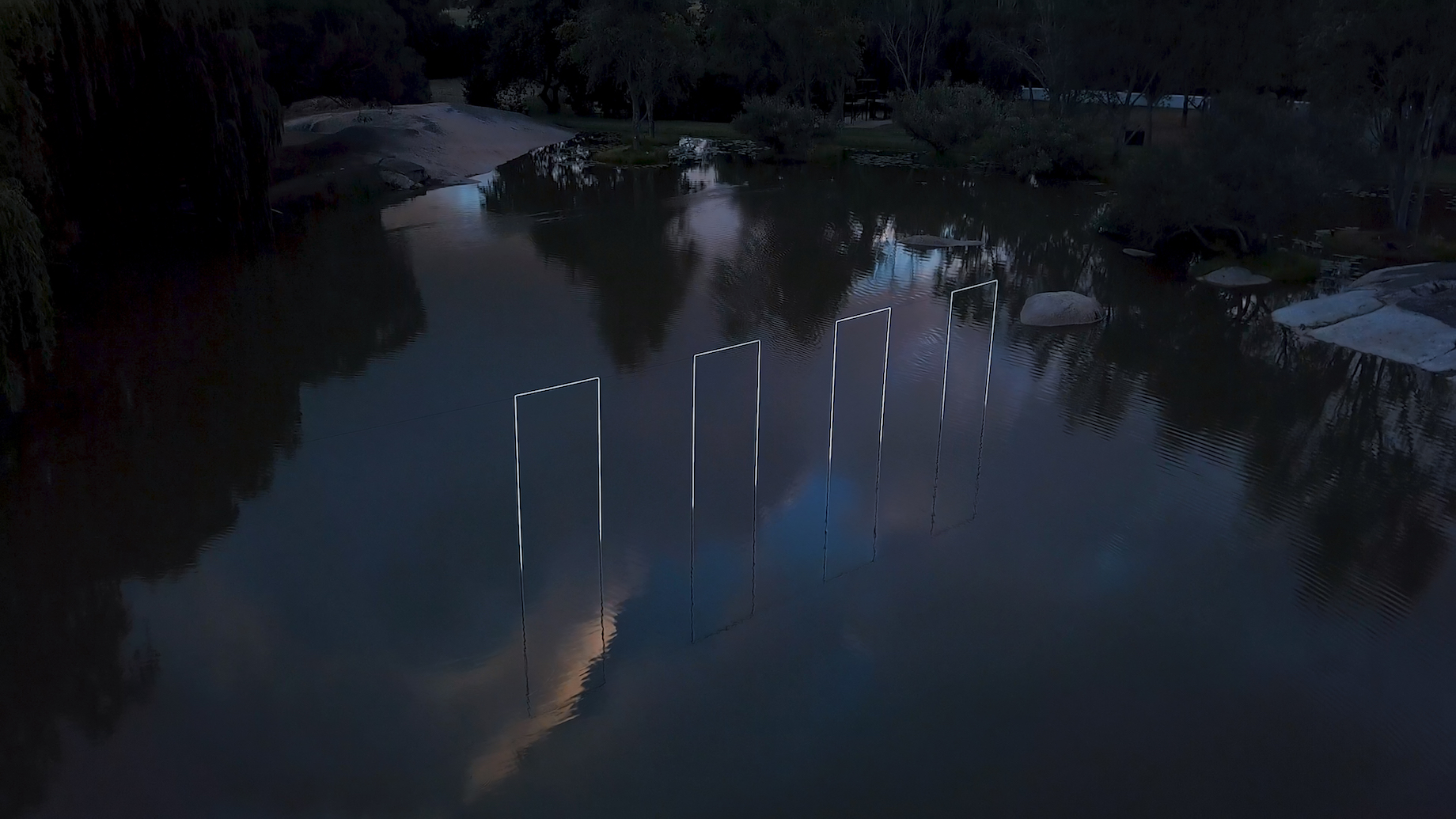Warther Dixon (Cait Warther and Wendy Dixon) is an artist duo based in the Bo-Kaap making site specific installations, sculptures, films and photographic prints. Individually, each of the members bring something remarkable to the table. Wendy’s toolkit comprises of strategic branding and product design while Cait’s consists of philosophy, lighting design and photography. The duo shares more on their connection by stating, “We are united through our intellectual curiosities and have been asking the same questions, from different angles, before tackling them together.” Thematically, Warther Dixon deals with the notion of the self, the soul and the relationship that they share. Unpacking this theme, they express, “We have recognised a fragility in the connection human beings have with their self and their soul. The familial and religious structures that traditionally designed this connection for us are inadequate for a human being in 2020. Yet research in neuroscience, psychology and intentions in technology are boldly contributing knowledge to our understanding of this connection.” The prevailing questions for the artistic practitioners are thus: how can an artwork harmonise to renew an embodied experience of this connection? And what the effects of this is on spiritual progress, community, and character development?
The meaning of their praxis becomes evident–a message of connection. The works of the pair are meant to act as a tool that allows for an exploration of the human connection to the self; “their sense of identity or what they may consider the divine.” They continue to share, “Through exploring these questions ourselves, we have come to understand self-knowledge as the basis of a life lived with authenticity, strength and meaning.” With a manifesto guiding their process, they ask themselves whilst working: is it “pure, elegant and tasty?” (borrowed from Miles Davis). Though this might sound a bit strange, they explain the “tasty” bit by saying, “…is the work tasty? Of the taste of our time, topically relevant to us and connected to contemporary culture. How will the work taste as an experience?” As many of Warther Dixon’s pieces are by nature, site specific, a heightened awareness of their final context is needed. This results in the duo spending time within these sites in order to, “get a sense of what scale we can operate at as well as specific restrictions of weather and geography.”
On the use of mirrors in their work, Warther Dixon explains, “What is interesting to us is how much time our peers and contemporaries spend contemplating their image; creating it, capturing it, looking at it, sharing it. But strangely we have such a distorted view of ourselves.” In the digital age people have, increasingly so, become detached from their selves and their true reflections. Even beyond the cognitive and perceptual layers of understanding of our image, traditional mirrors and most cameras capture our mirrored images.”–our reflection in the mirror is our true image shown to us in reverse. The work Pleasure to Meet You ties in with this. The artists explain that the work presents an opportunity for viewers to look within and spend some time contemplating what the work presents to them and equally, what self-perception presents to the viewer. “When you step into the mirrored booth what you will be confronted with is three reflections of your image staring back at you but only one of them is your true reflection, or at least, your non-reversed image. This non-reversed image is yourself as others see you.”

Unpacking the philosophical thought process behind Pleasure to Meet You they share, “This booth exists as a heterotopia, a virtual space that disrupts the continuity and normality of common everyday places, it is a space removed from the evenly spaced movement of time,” (Foucault). “A heterotopia is a space that is neither good or bad but rather different and parallel to the everyday. The moment when a mirror reflects our image it acts as such a space. The mirror becomes a portal creating an otherworldliness from which to consider our present self from a distance.”
The work of Warther Dixon is refreshing. We live in a world where individualism is emphasised, we are slowly losing ourselves in selfie culture. It is in these distorted versions of the self that the individual loses themselves–reversed camera images; face filters; Photoshop… Warther Dixon reminds us of the true self and the beauty of this self by re-introducing us to them through philosophical means. Their work becomes spiritual, freeing and a form of self-care created for their viewer.
Warther Dixon share some final sentiments with me in quoting Maya Angelou: “When you learn, teach. When you get, give.” The artist duo facilitates a residency at their studio to practitioners in Cape Town. For more info on this contact them through social media.



















































